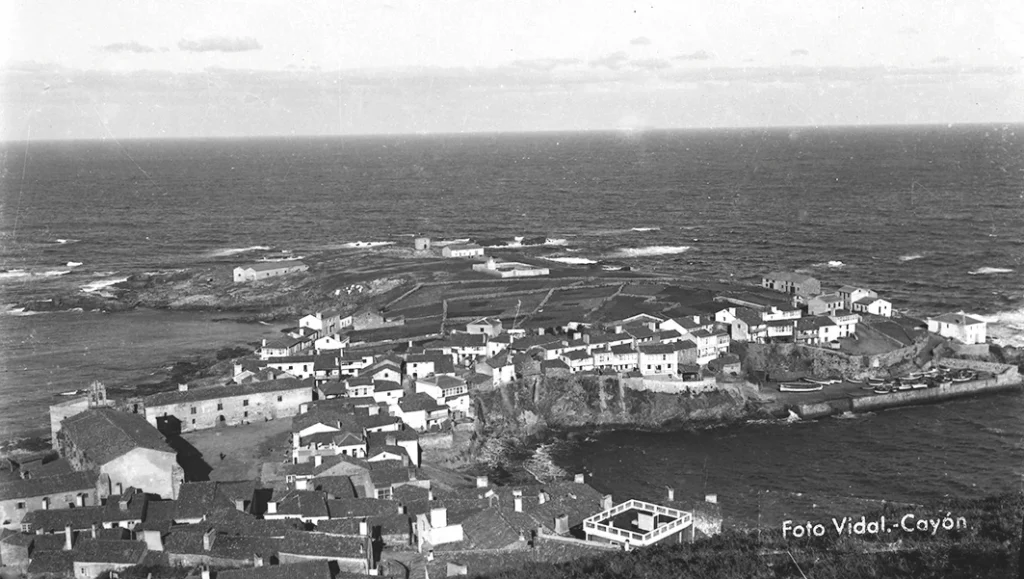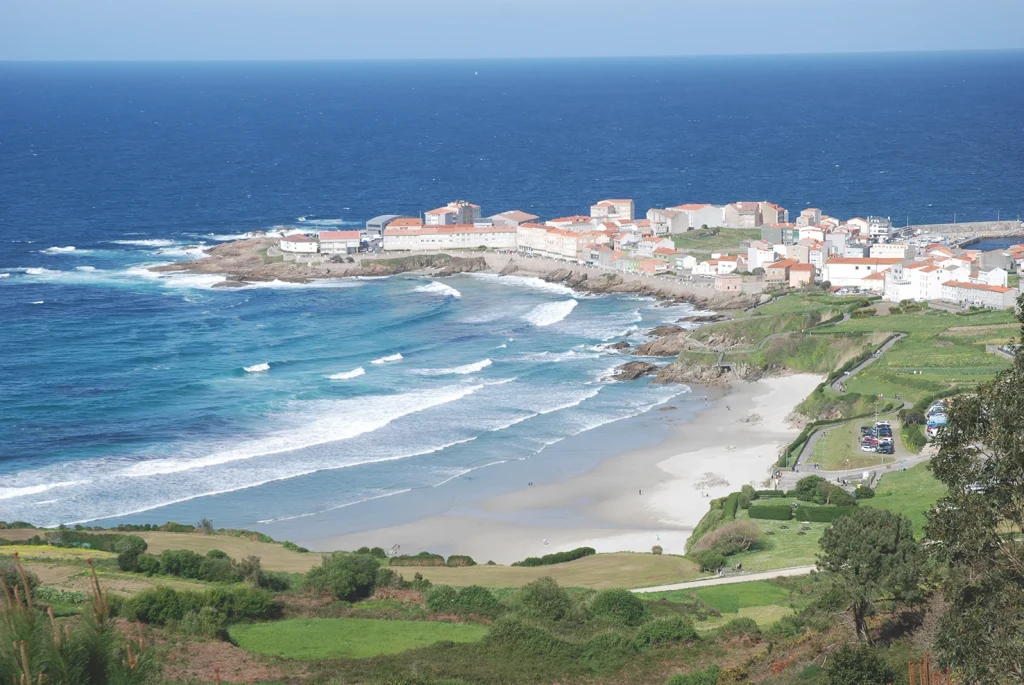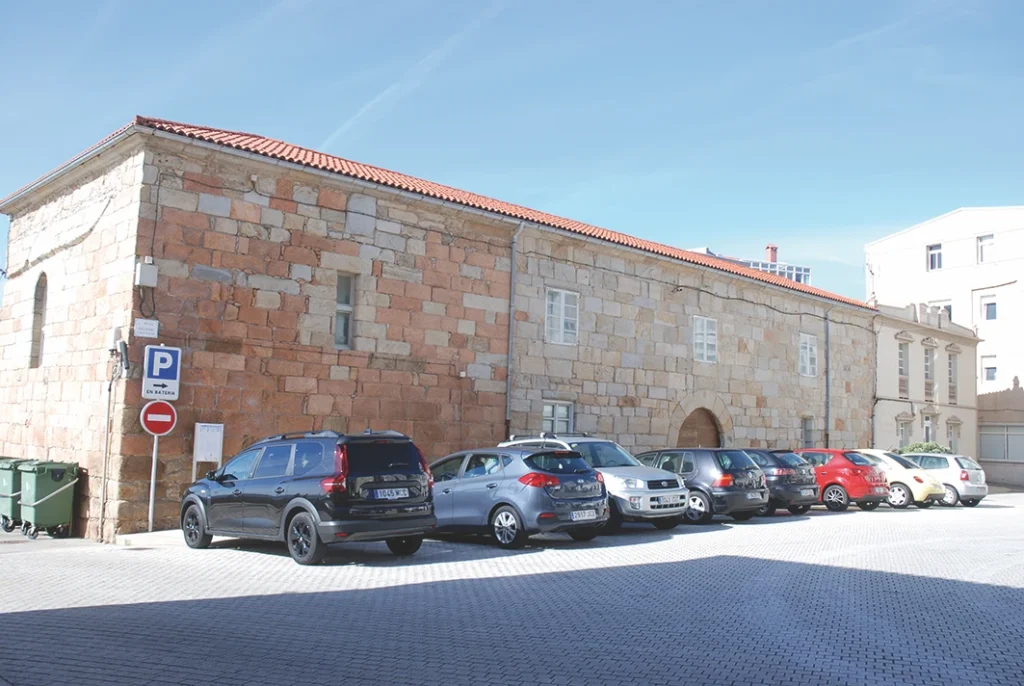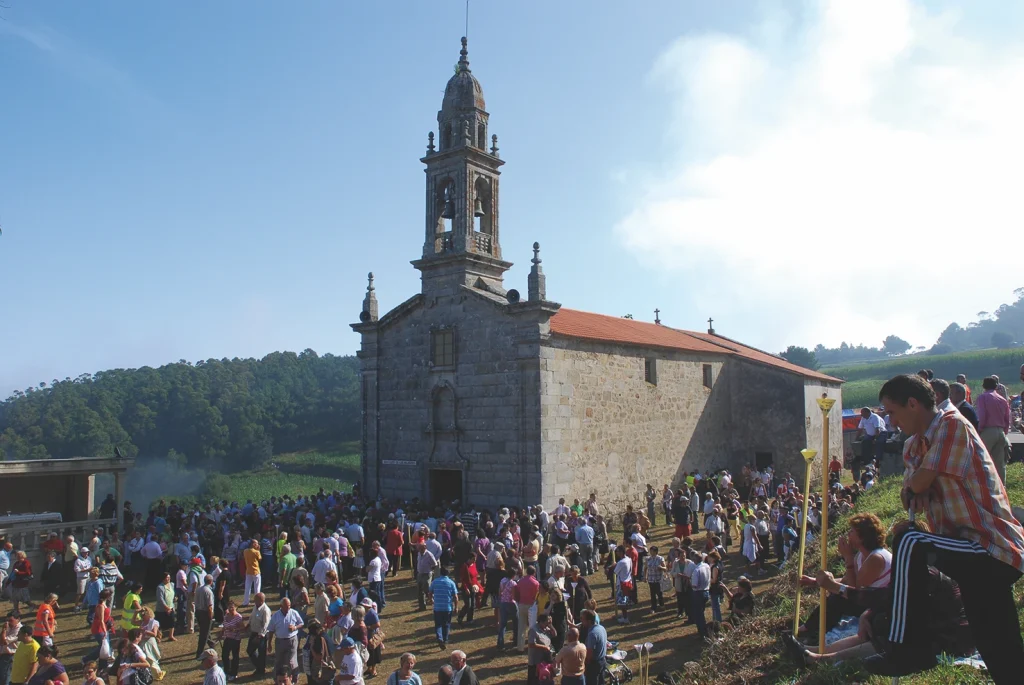History
The origins of this town are linked to the whaling activity of the Basques and Asturians who hunted them on this coast. Juan Molina mentioned this type of fishing in the mid-16th c., stating that it took place in the winter and was very profitable, thanks to the large amounts of oil that were extracted.
Cardinal Del Hoyo also mentioned whaling when he referred to the port. Besides the oil, the bones were also used. Stools were made from the vertebra, and the ribs were used as slats for roofing.
The Bermúdez de Castro family, lords of Montaos, were the proprietors of the town of Caión. One of the members of the family, Francisco Bermúdez de Castro, was the founder of the monastery of the Augustinians, who were responsible for the parish, which was dedicated to Nuestra Señora del Perpetuo Socorro (Our Mother of Perpetual Succour). They were later transferred in 1772, to the city of A Coruña to occupy the Jesuit convent, after they had been evicted.

Sardines and congers were the species most commonly caught at this port in the early 19th c., according to José Lucas Labrada.
In the early 20th c., Caión was the largest town in the municipality of A Laracha, with nearly five hundred inhabitants. It had salting factories, a children’s school and a police station.
Just like Muxía and Malpica, Caión is on a narrow peninsula pounded by the waves, which has had an influence on how the town has developed and taken shape and on the economic activity of the townsfolk, who used the sea as their main resource.

Changes to the town in recent years have left little trace of the traditional fishermen’s houses with balconies and galleries, painted white or in the bright colours often used for the fishing vessels. However, the town’s unique location and the magnificent beach of As Salseiras, which stretches out to the west of the town, have made Caión an attractive seafaring town that is well worth a visit at any time of the year.

Route on foot around the town
We recommend starting the route at the Praza de Eduardo Vila Fano, commonly considered to the centre of this small town. The two most important historical buildings are here: the pazo of the counts of Graxal and the parish church.
The noble title of counts of Graxal was acquired by the Bermúdez de Castro family when the daughter of the founder of the convent, Beatriz Bermúdez de Castro, was married to Juan Álvarez de Vega, count of Grajal de Campos (in Leon).
The pazo, or manor house, is a long rectangular building that takes up the west side of the plaza. The main entrance is through a door with a semicircular arch and large corbels. The façade is plain and has few openings. The building was evidently extended on the south west side since the colour of the granite is pinker with hardly any openings. This was the site of the local gaol, since the courts of the ancient jurisdiction of Caión were held here. There are several highly eroded coats of arms on the façade. The main one is situated above the central window and shows the arms of the Bermúdez and Castro families.
Santa María do Socorro was the church of the old monastery of San Agustín, founded in the 16th c. by Francisco Bermúdez de Castro, lord of the town of Caión. It was later made the parish church, to replace the church of Santa María, which was situated where the chapel of the Virxe dos Milagres is now.
The building consists of a rectangular nave and apse, and has a gabled roof. The main entrance is in the north side wall that opens out onto the plaza, and includes a beautiful Renaissance portal with a semicircular arch, flanked by two columns that end in a triangular pediment.
The tympanum of the wooden door shows the Annunciation, the Immaculate Conception and a Virgin with Child. There are two bell belfries in the plain façade. One is in the north corner, formed by a stone tower that has four holes. The other takes the form of a bell gable with two holes on the apex of the roof.
The old monastery building is at the back of the church. Two coats of arms can be seen on the façade. The one on the left has a tower and the following inscription:
Malo mori quam foedari (Better to die than to be base)
The one on the right has the symbols of the Bermúdez and Castro families, relatives of the founder of the monastery.
Leave the plaza via the south west corner and on the left you’ll see the building of the fishermen’s guild built in 1940. The building contains the fishery archives and a permanent exhibition about the seafaring culture and history of the town.
Inside you can see documents, fishing tackle and panels explaining the development of fishing and the way of life of the inhabitants of the port from the days when whaling was practised here.
Continue on the route along the promenade that borders the entire coast of the Caión peninsula, which will take you to the port, situated in the cove of the old wharf. Here you can see the port facilities and vessels that are moored or on the esplanade itself. Then head off the la plaza, where the route started. You also have the chance to take the coastal walkway that goes to the beach of As Salseiras and continues along the earth track alongside the coast.
When you come back to Caión you can visit the sanctuary of Os Milagres, which is about two kilometres away from the town on the road to Carballo. The old parish church of Santa María de Caión used to be here, before the Augustinian Fathers founded the monastery in the town in the mid-16th c. The monastery church absorbed the one for the parish, converting it into an attached chapel and holding mass only on the festival of Our Lady. The current Baroque chapel was built in 1833. The pilgrimage is held every 8 September, and people from the entire region of Bergantiños participate in the event. The tradition is to walk at night or at dawn to the chapel and hear the mass. The Sunday before the pilgrimage, the figure of the Virxe dos Milagres (Virgin of Miracles) is transferred in a procession to the chapel and returns to the parish church on the Sunday following the fiesta.

After Caión, head back to Malpica, which is where this fourth route started.